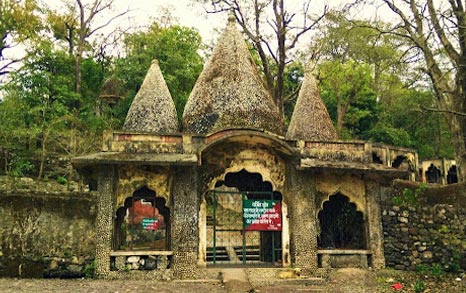Things to do in Rajaji
Rajaji National Park is located in the foothills of the Shivalik range, spanning the state of Uttarakhand in northern India, popularly known as Devbhoomi. It lies near the cities of Dehradun, Haridwar, and Rishikesh, covering an area of over 820 sq km. Spanning a diverse range of habitats, the park shelters iconic species such as the Bengal tiger, and Asian elephant, and uncountable bird species, highlighting its ecological importance. Visitors can embark on guided jeep safaris for wildlife sightings, enjoy serene birdwatching sessions, or take nature walks through its varied terrain. Rajaji National Park’s blend of river valleys, forested ridges, and grasslands offers an engaging and comprehensive environment for those looking to experience both the natural beauty and rich biodiversity of the region.
Activities to Engage in Rajaji National Park
Being surrounded by spiritual as well as enchanting landscapes like Haridwar, Rishikesh and Haridwar, there are a plethora of activities tourists can indulge in along with their visit to Rajaji National Park.


Jeep Safari
Jeep safaris are immensely popular in Rajaji National Park, offering an exhilarating experience of the national park’s rich wildlife. Visitors can embark on thrilling safaris through the dense forests, traversing rugged terrain and winding pathways while spotting majestic elephants, elusive tigers, graceful deer, and a variety of bird species. These safaris provide an ideal opportunity to explore the park's diverse habitats and observe its wildlife up close. Jeep safaris in Rajaji operate daily in two shifts: morning (6:00 am to 9:00 am) and evening (3:00 pm to 6:00 pm). It is highly recommended to book in advance, especially during the peak season from November to March.
Birdwatching
Rajaji National Park is a renowned destination for birdwatching, offering excellent opportunities for enthusiasts to observe a wide variety of bird species. The open grasslands in the foothills, situated between the western and central Himalayas, contribute to the park's rich avian diversity, enhancing birdwatching experiences. With over 400 species, Rajaji is a birdwatcher's paradise. Visitors can explore the park's lush landscapes with binoculars in hand, spotting vibrant species such as the Great Hornbill, Crested Kingfisher, and Asian Paradise Flycatcher. Rajaji National Park’s diverse ecosystems, including riverbanks, grasslands, and forests, create ideal conditions for birdwatching.
River Rafting
Experience the excitement of river rafting and canoeing on the turbulent waters of the Ganga River, which flows along the western boundary of Rajaji National Park. Navigate through exhilarating rapids and take in the stunning views of the surrounding landscapes as you embark on a thrilling adventure amidst the park’s pristine natural environment.
Camping
Spend a night under the star-studded sky amidst the wilderness of Rajaji National Park by staying at designated campsites within the park. Relish the tranquility of the environment, listen to the nocturnal sounds of the forest, and immerse yourself in the natural ambiance around a crackling campfire. Camping permits can be acquired from the park authorities, ensuring a secure and unforgettable outdoor experience.
A Visit to Chaurasi Kutiya
Chaurasi Kutiya, commonly referred to as the Beatles Ashram is one of the safari zones within Rajaji National Park. Formerly known as the Maharishi Mahesh Yogi Ashram, it gained its current name after the renowned rock band, The Beatles, resided and practiced meditation in its distinctive bee-hive-shaped 84 cottages. The ashram's walls, adorned with vibrant graffiti, attract visitors from around the world.
Photography
Rajaji National Park provides an excellent opportunity for capturing wildlife in their natural habitats through photography. The park's diverse range of animals, scenic landscapes, and vibrant flora and fauna offer abundant subjects for both wildlife and nature photographers. Photographers may capture images of majestic Asian elephants, Bengal tigers, and a variety of local and migratory birds. However, it is essential to adhere to the national park’s rules and maintain a safe distance from the animals while photographing. Respecting wildlife and their natural environment should remain a top priority. The national park authorities are available to provide guidelines and support to ensure a memorable and responsible photography experience.